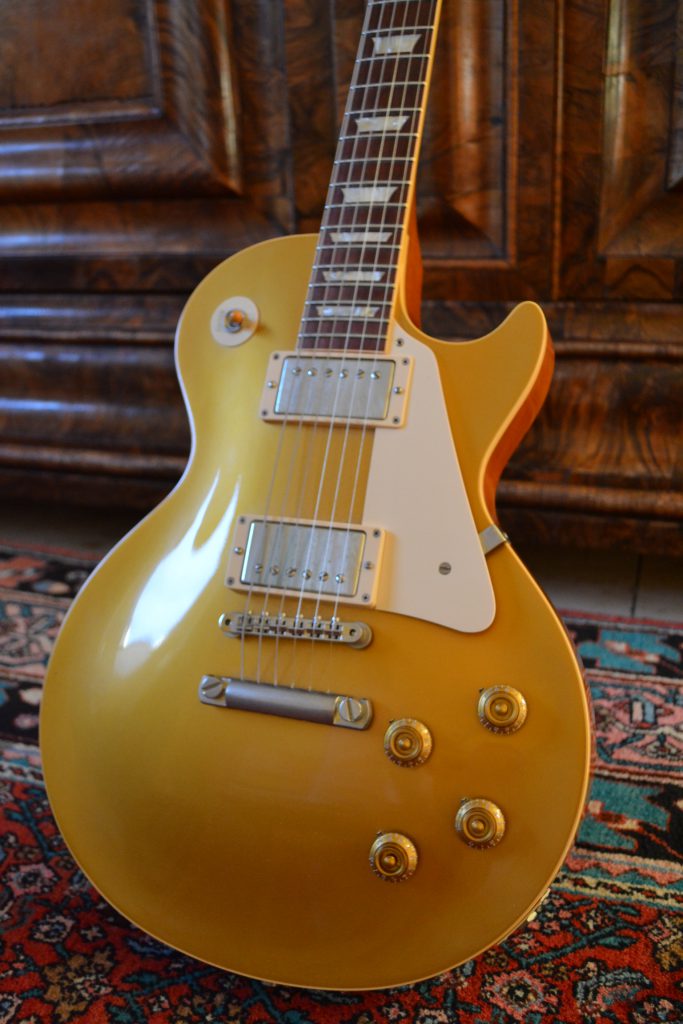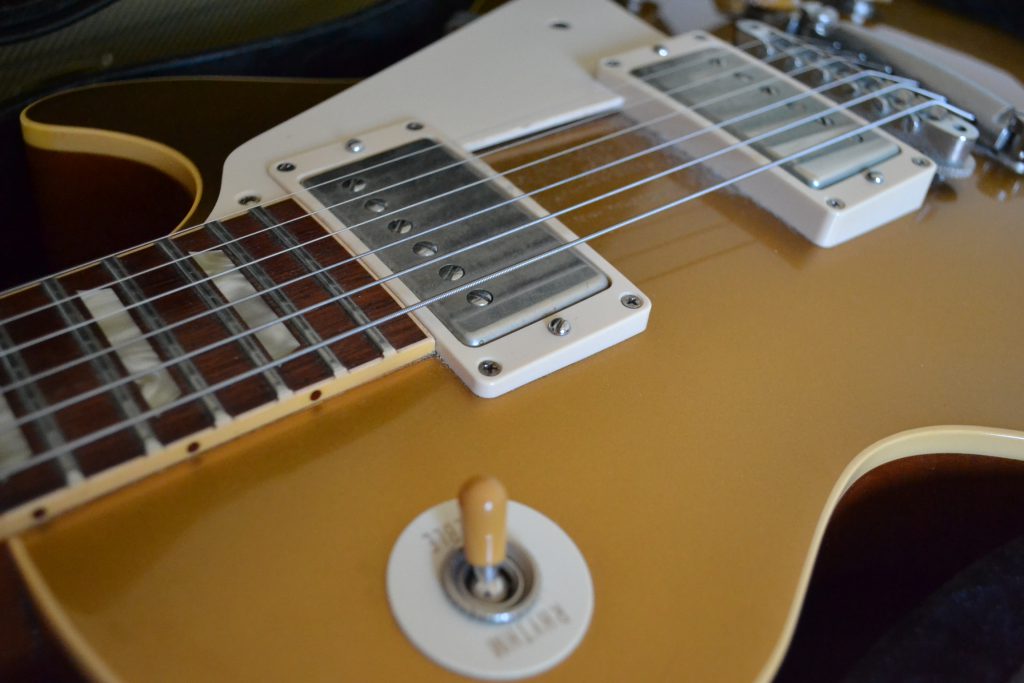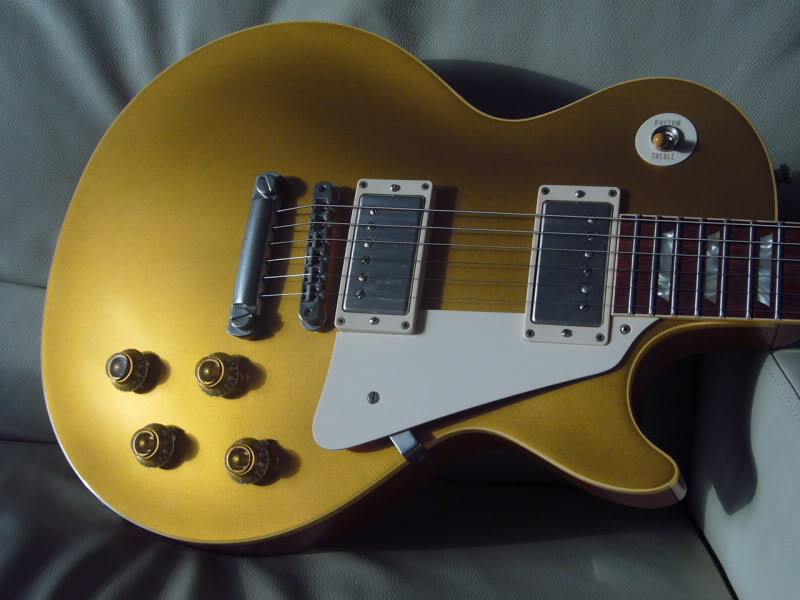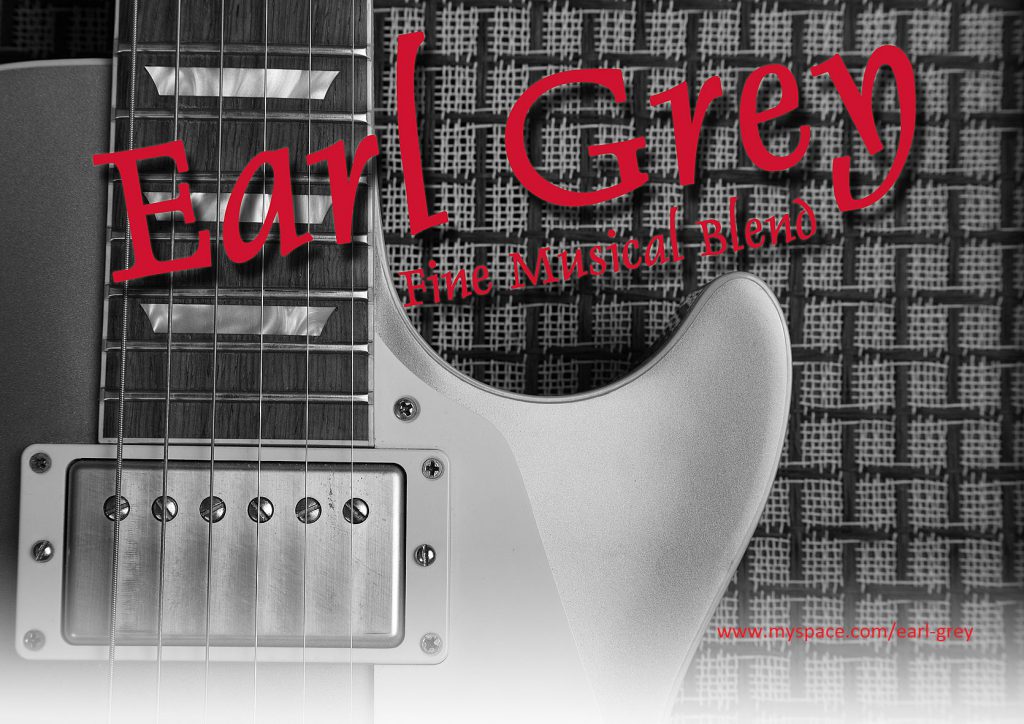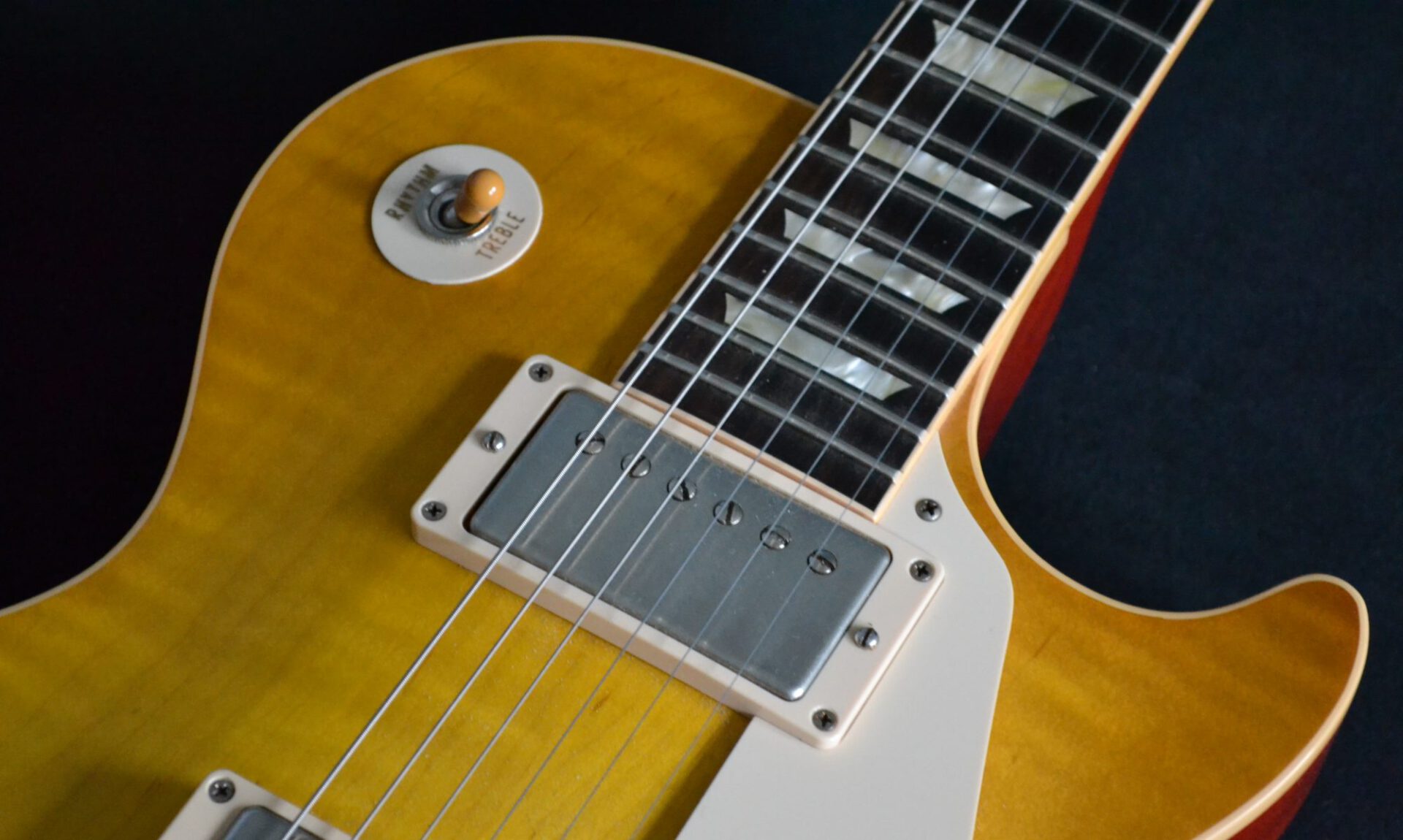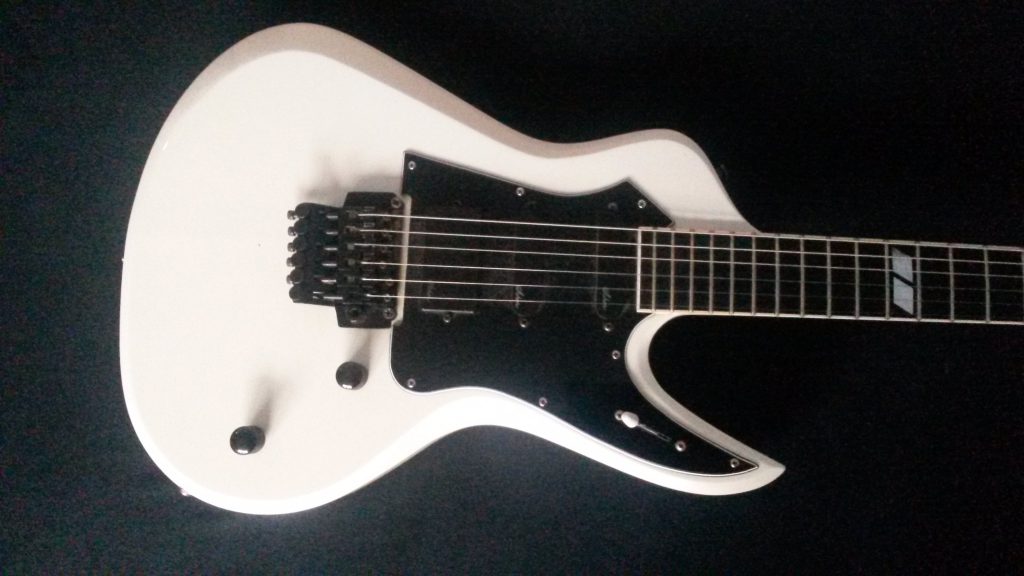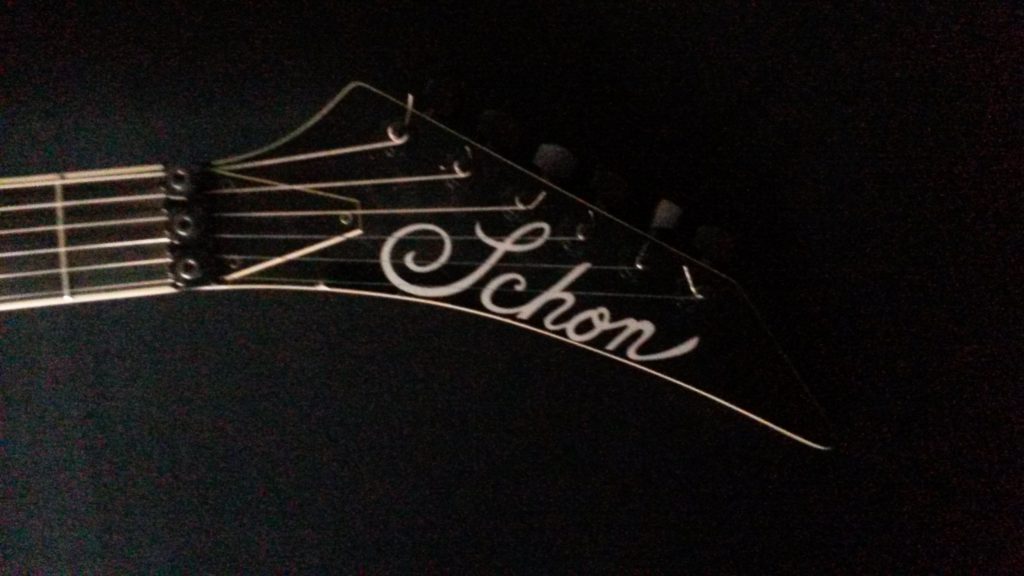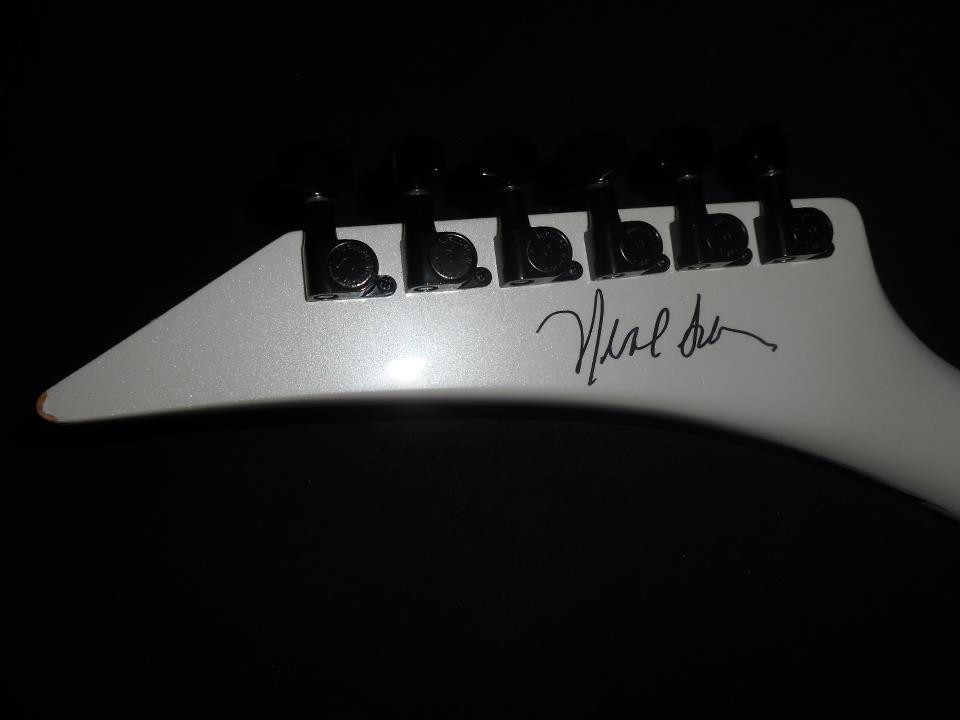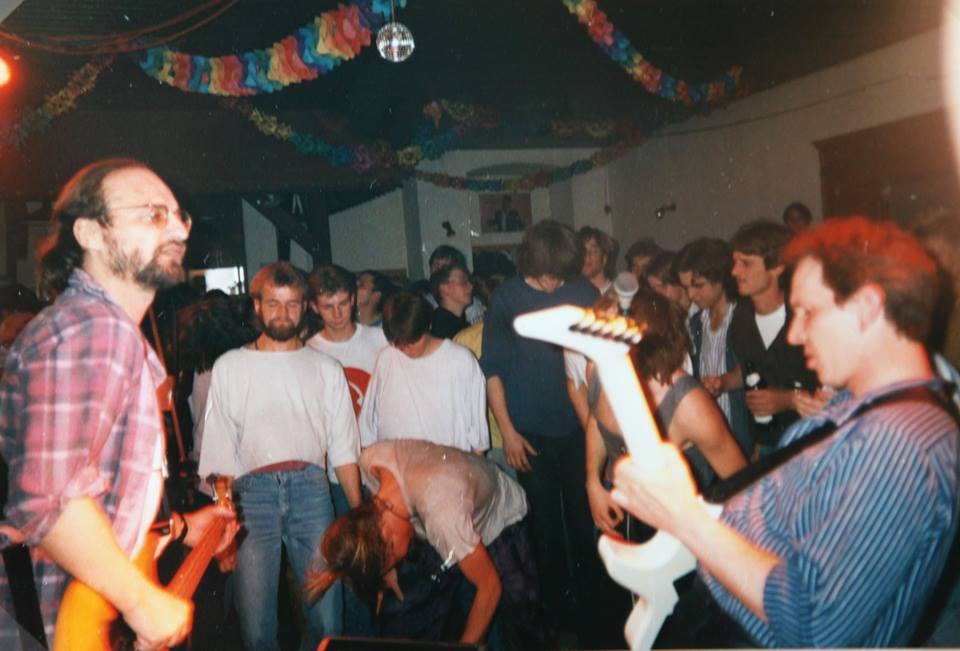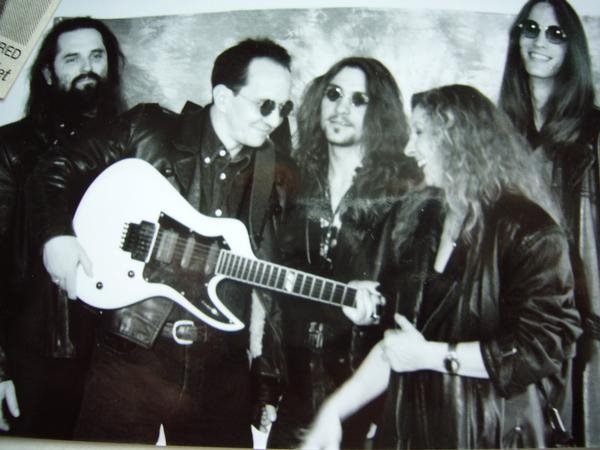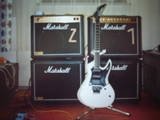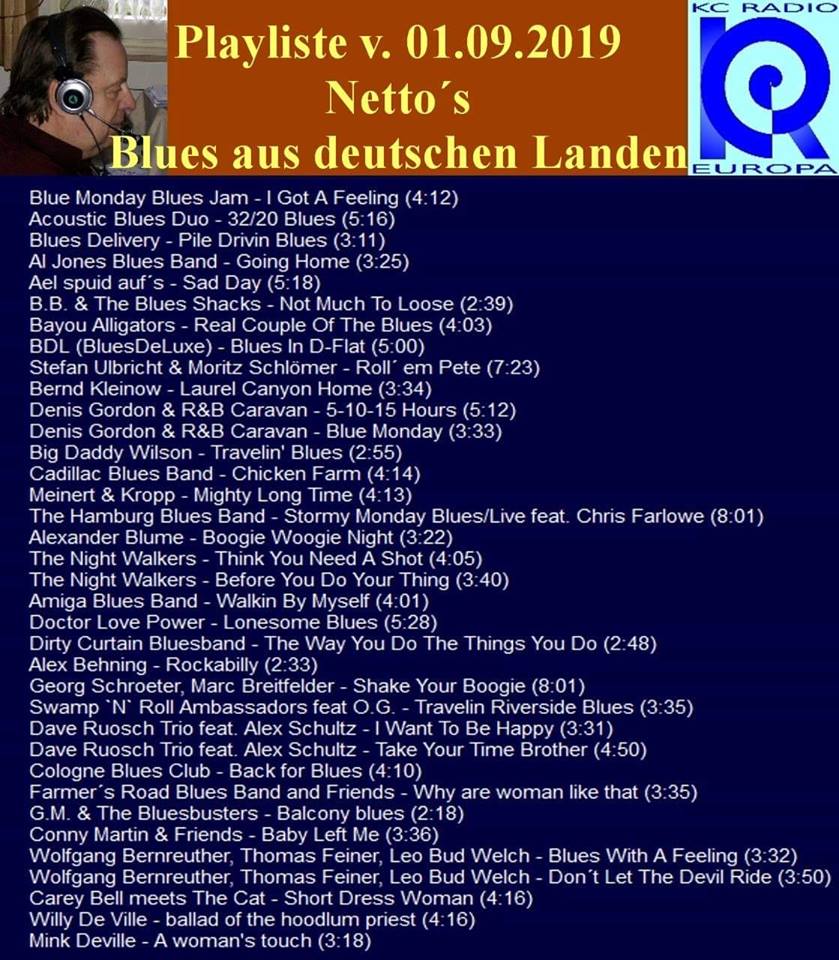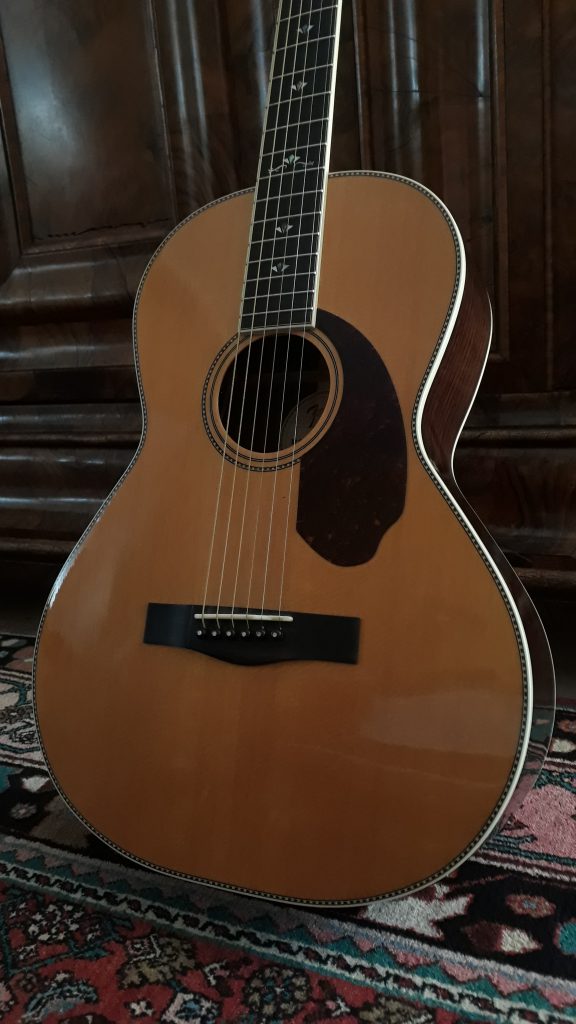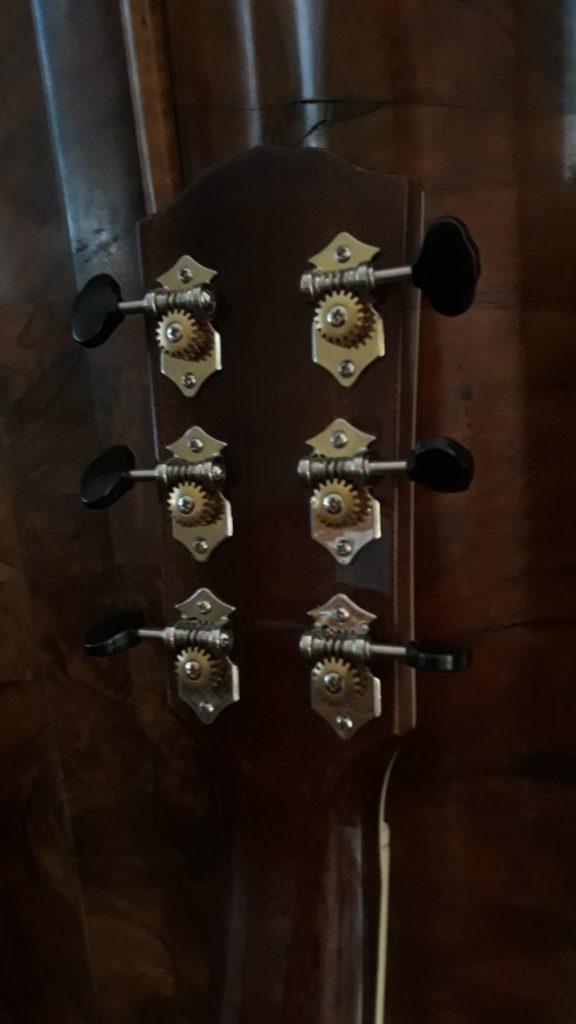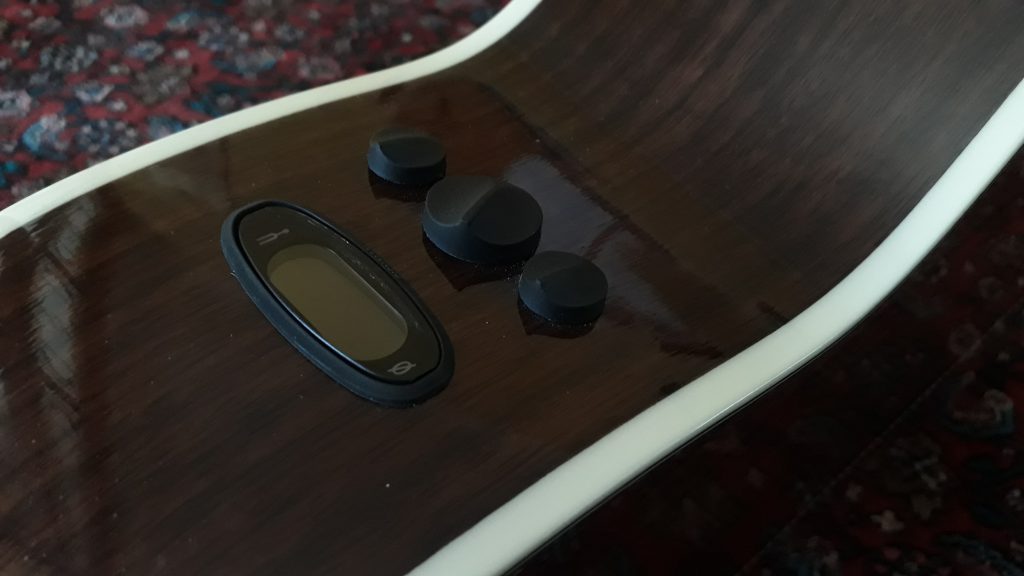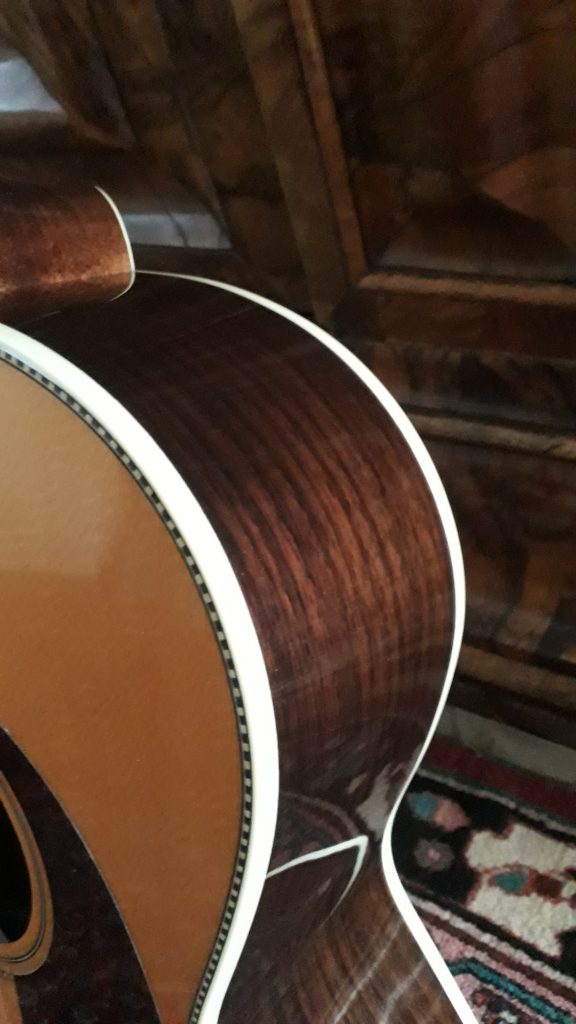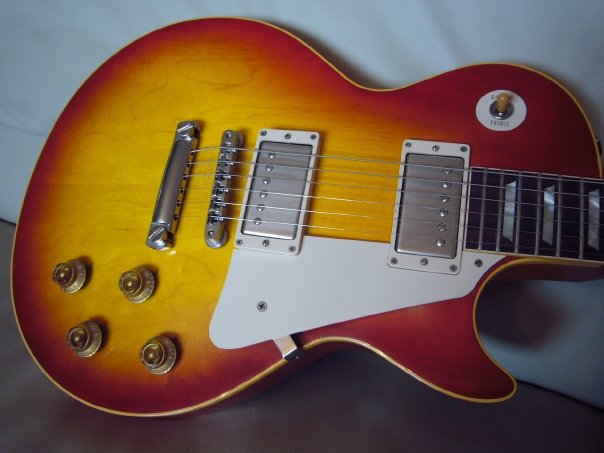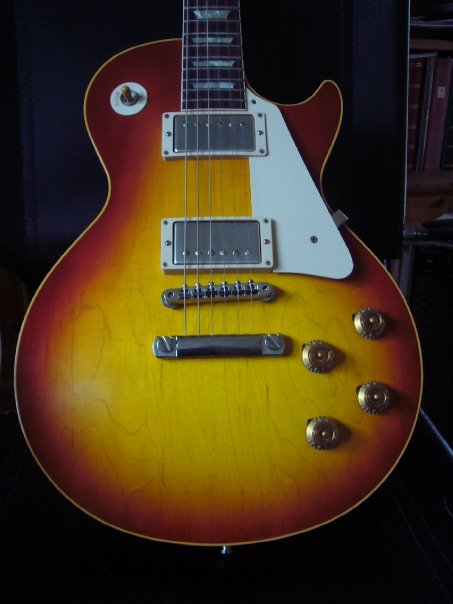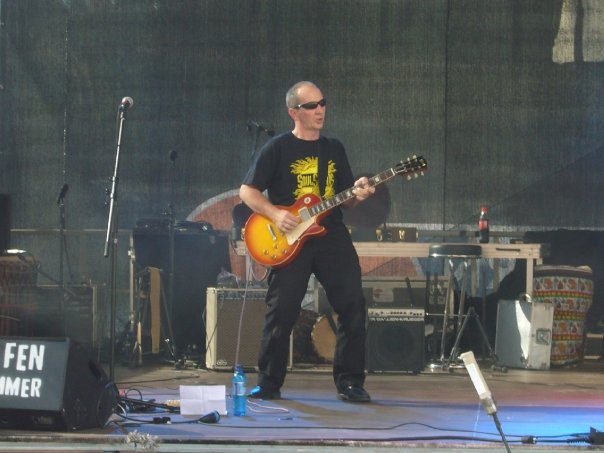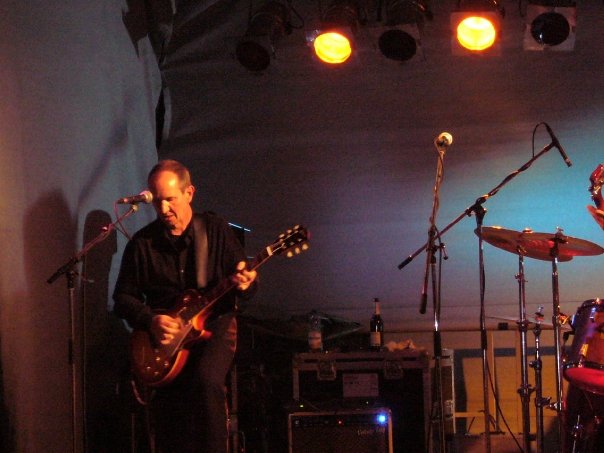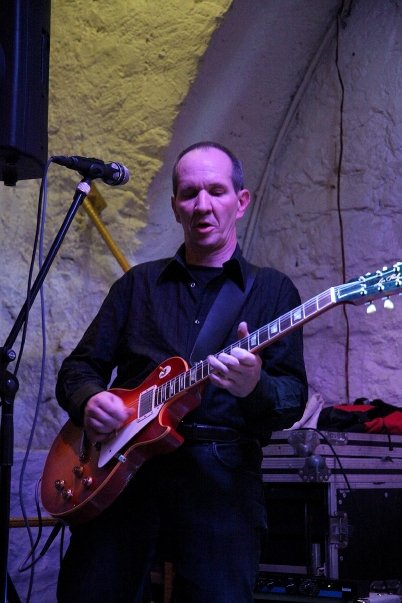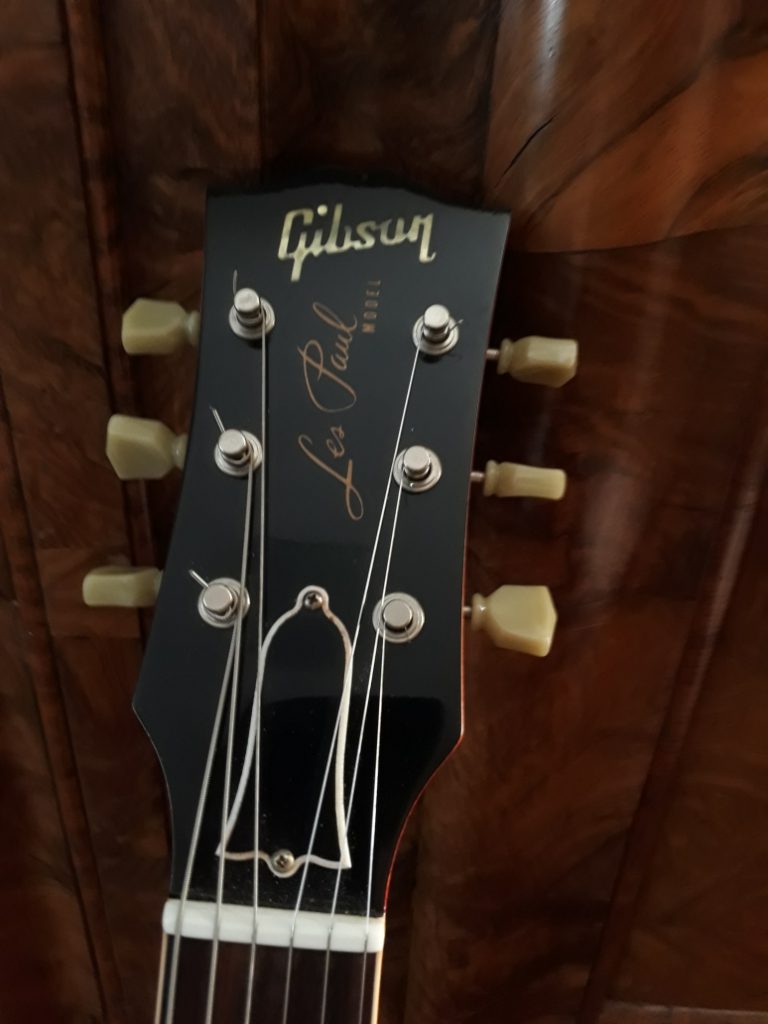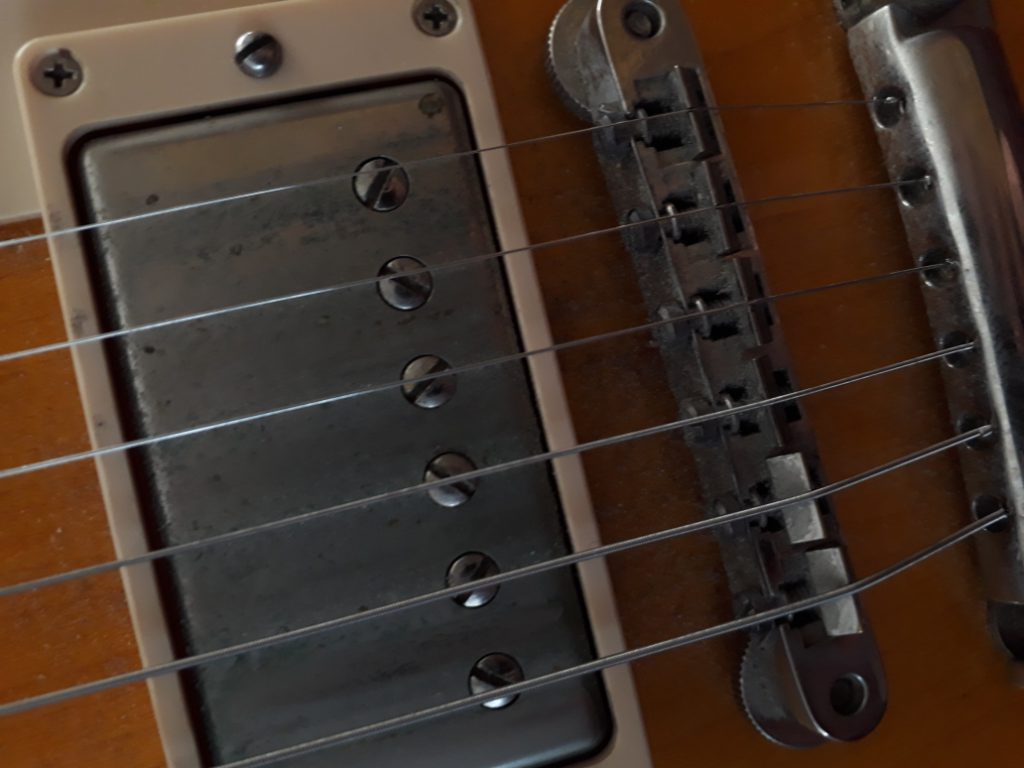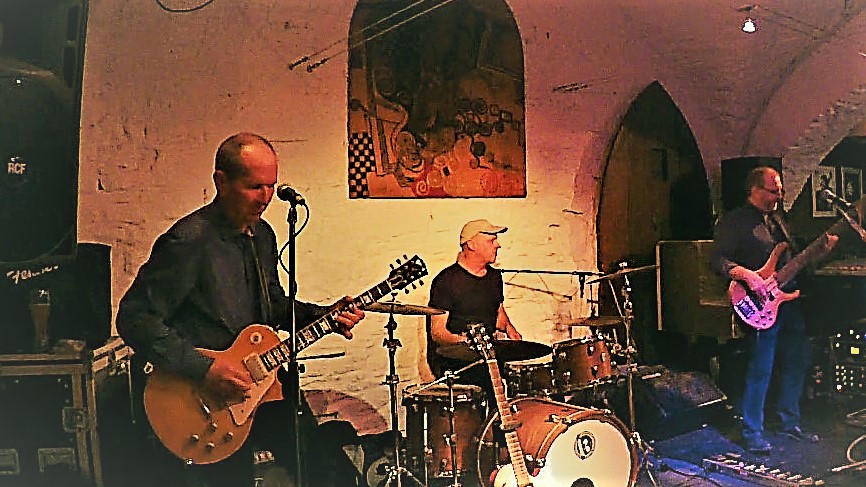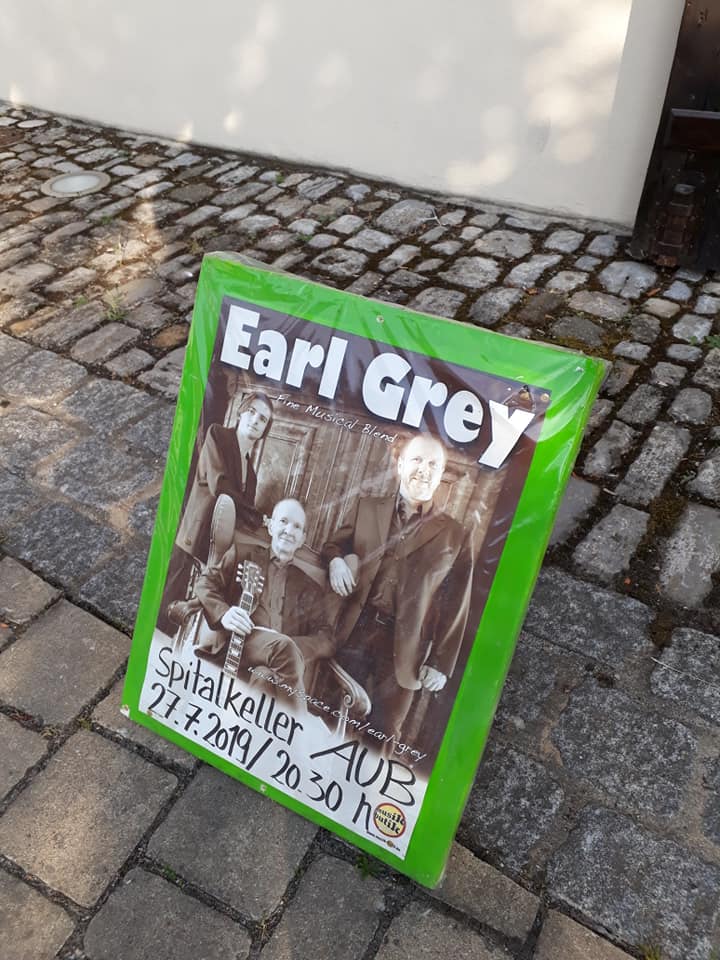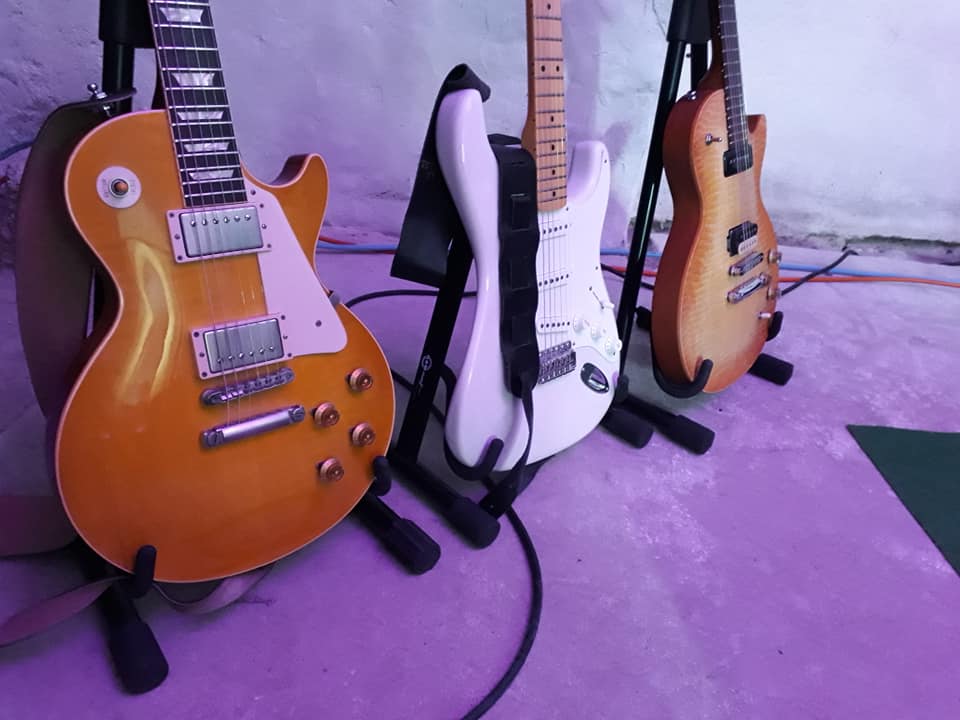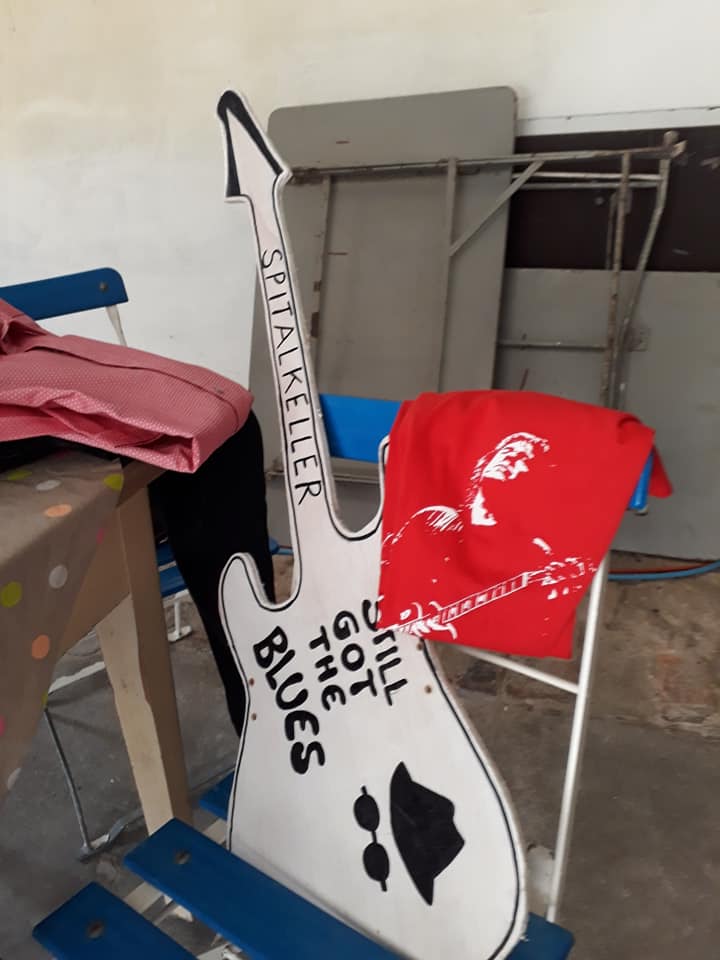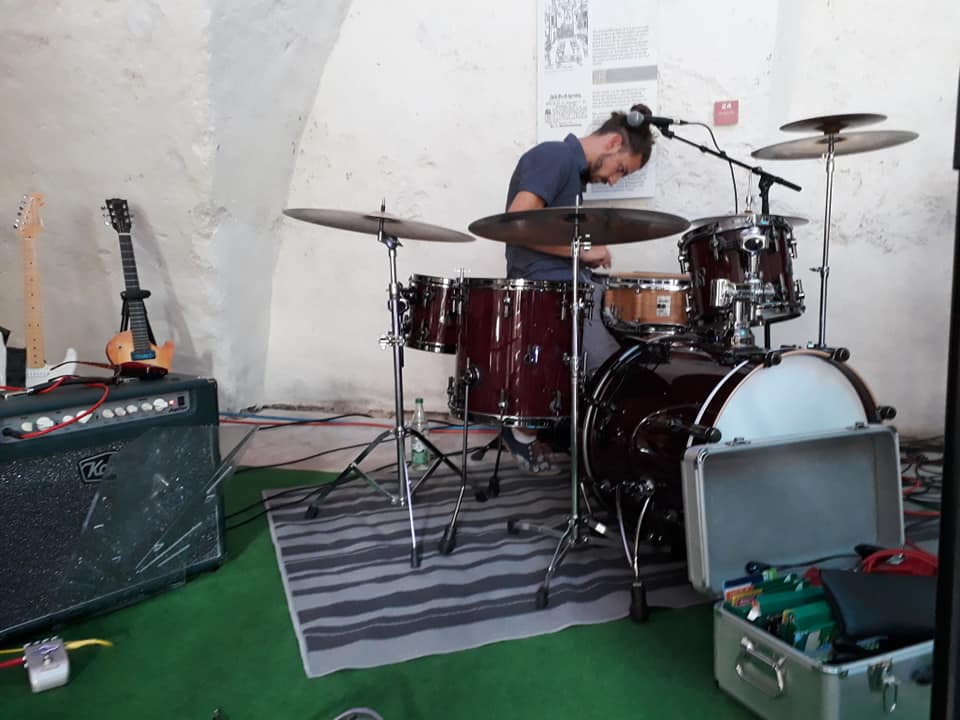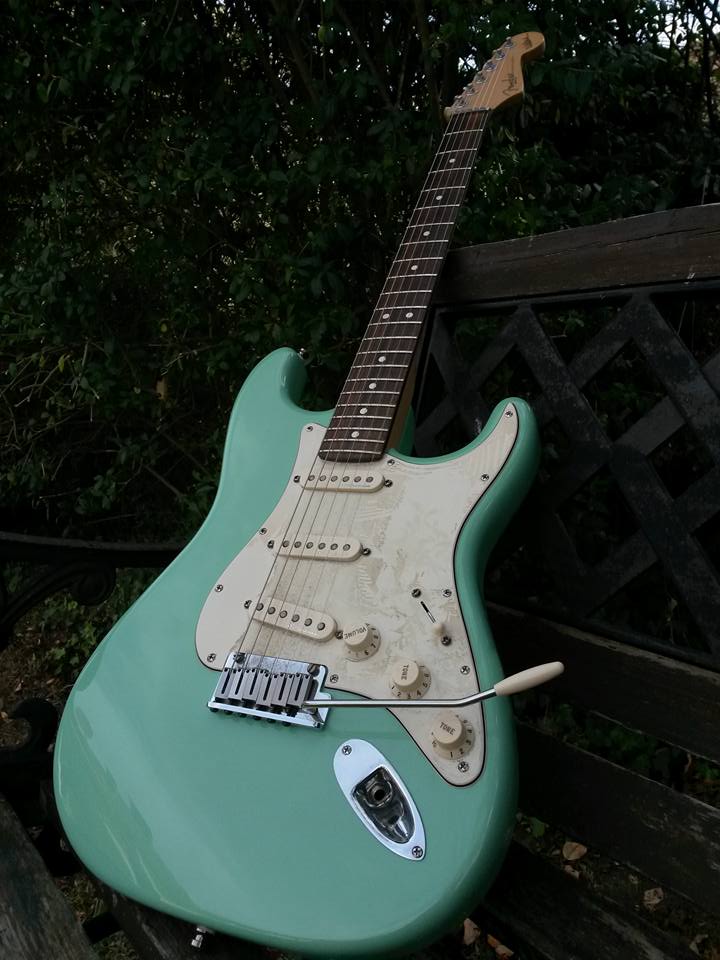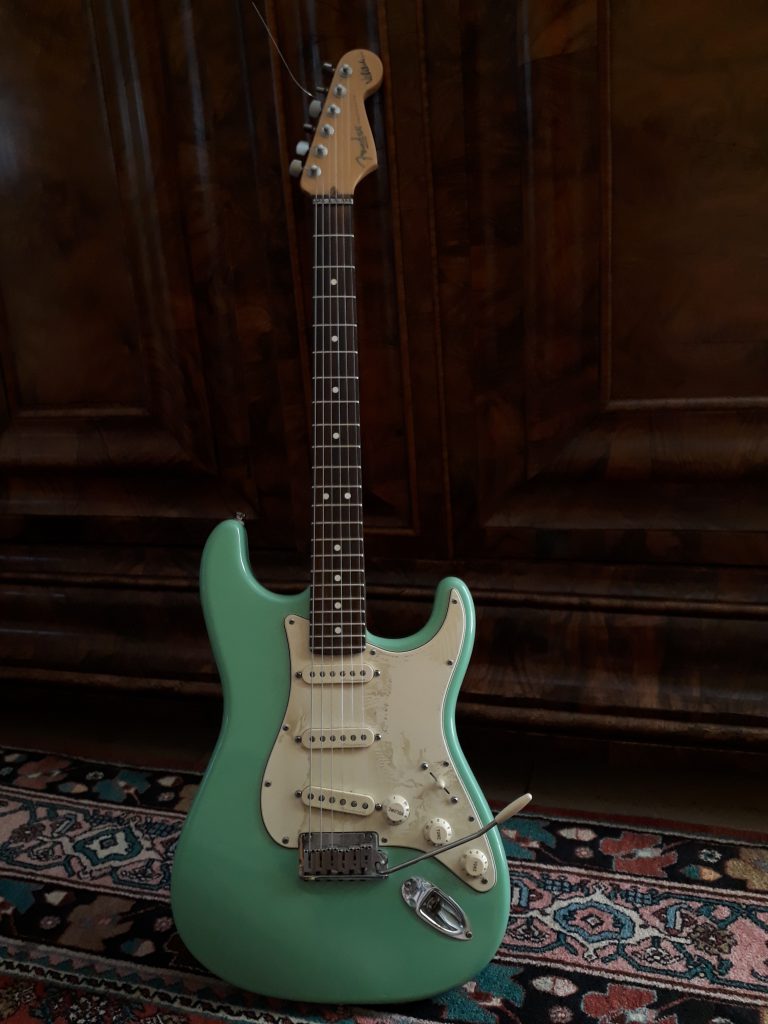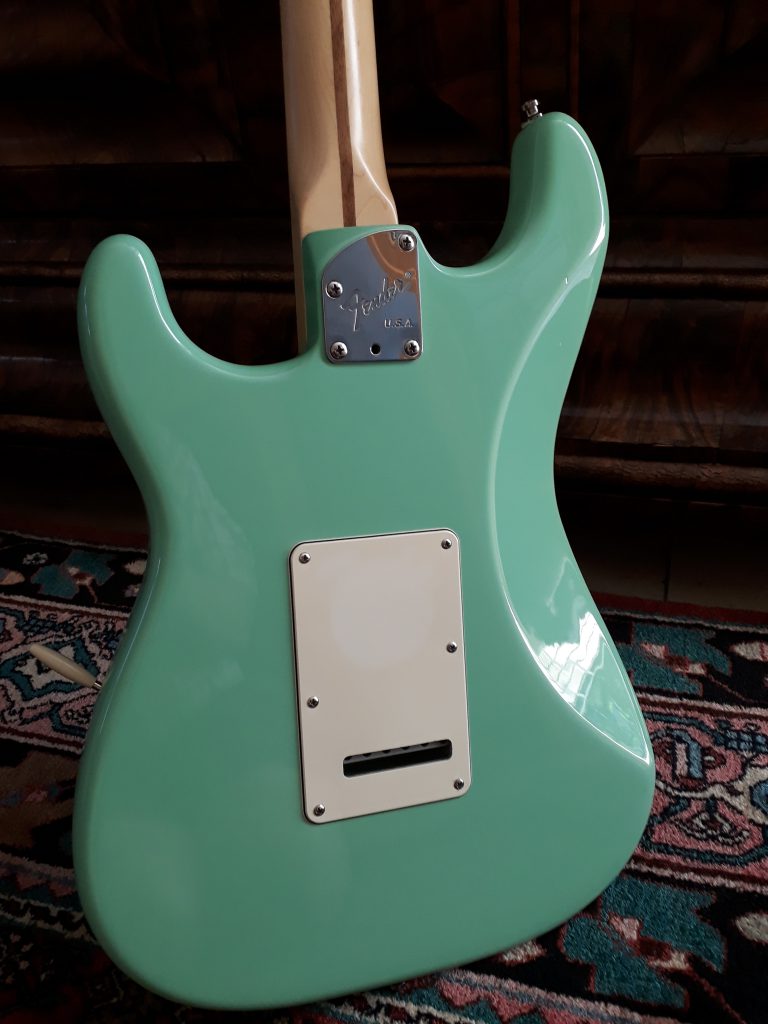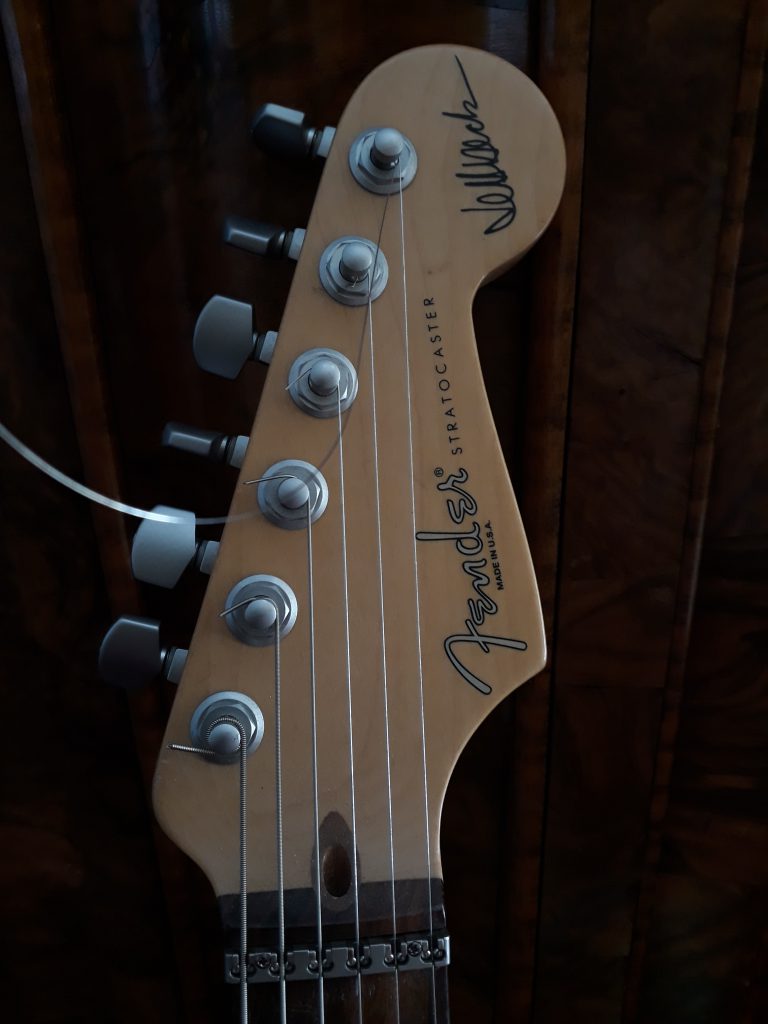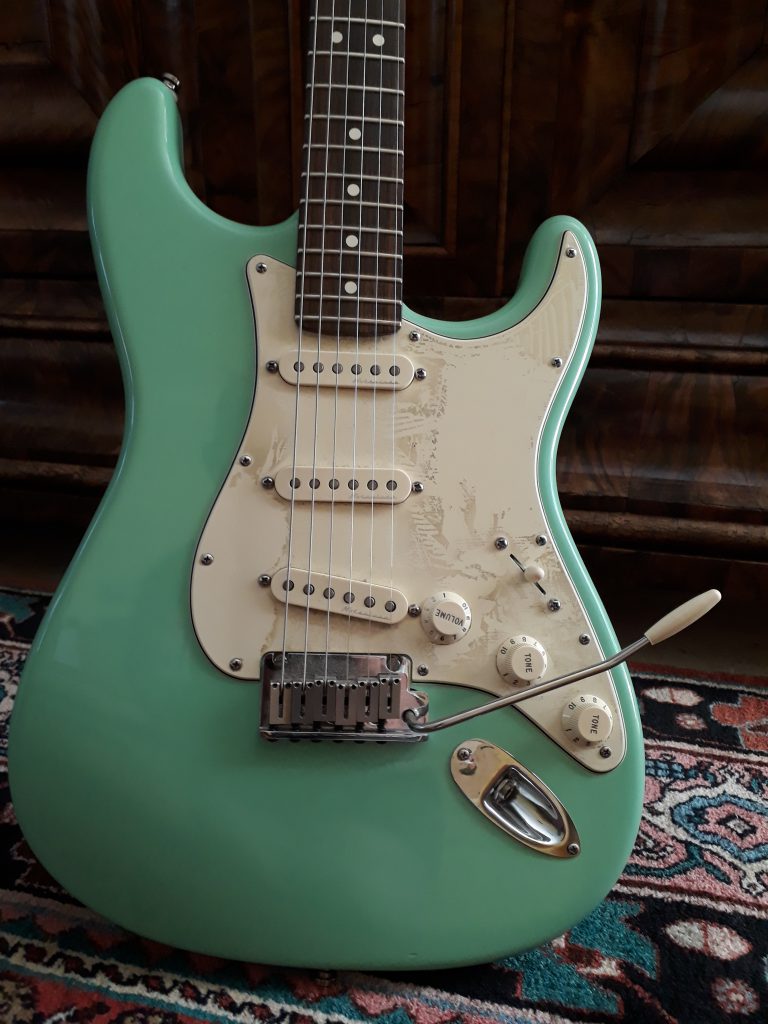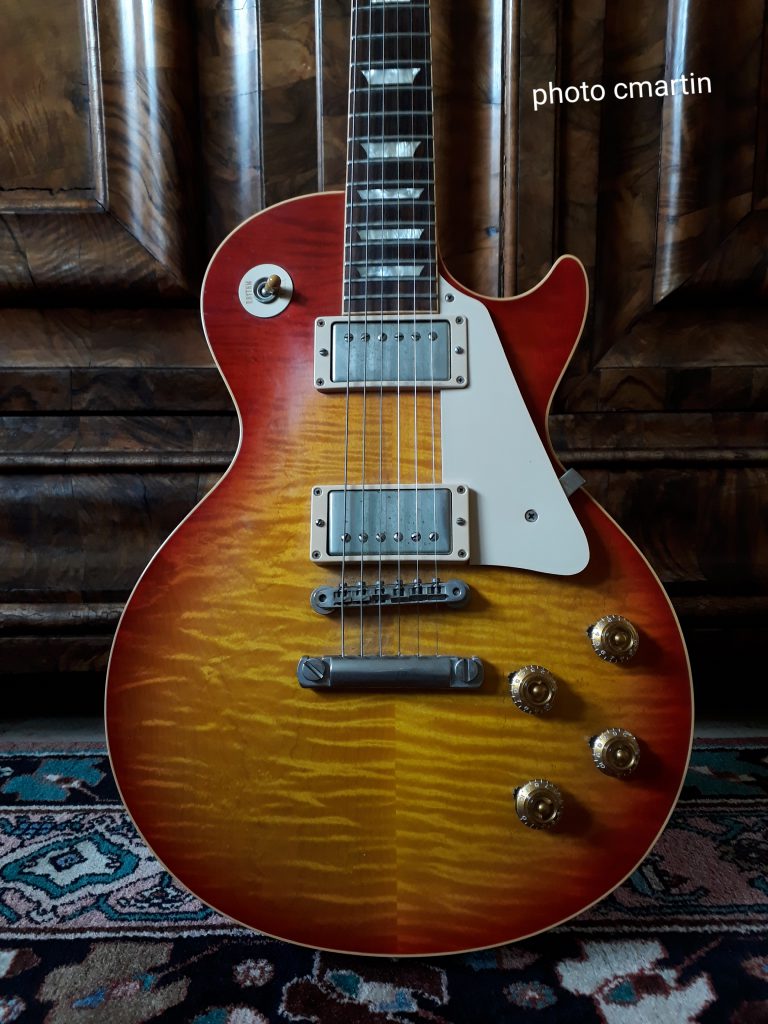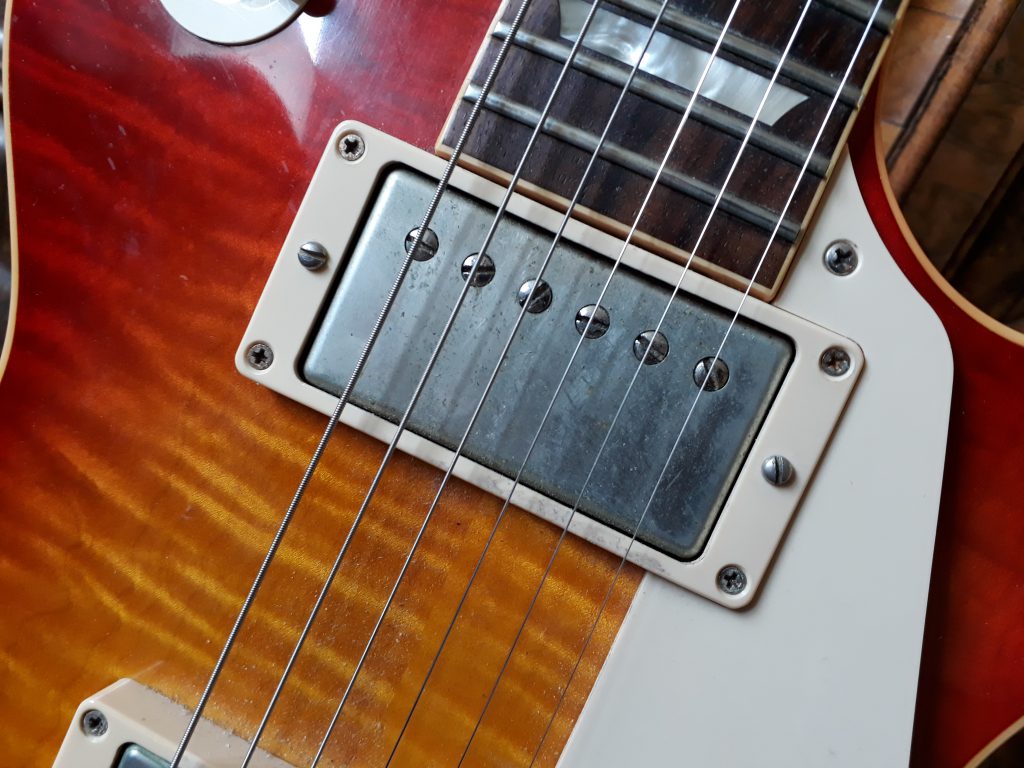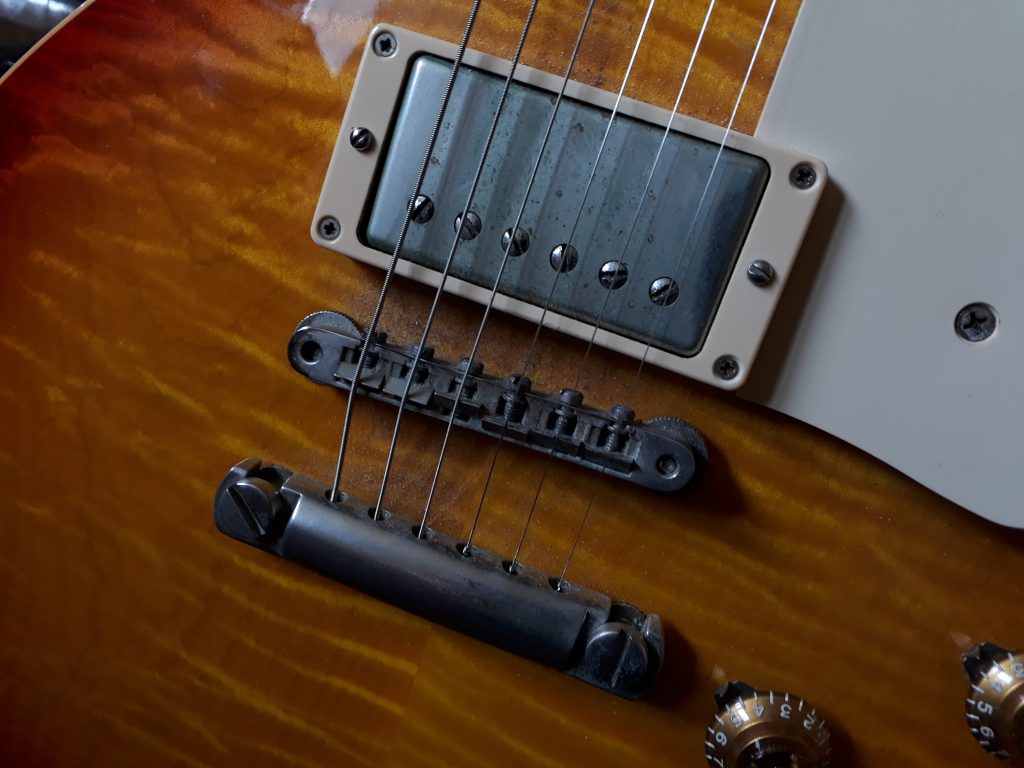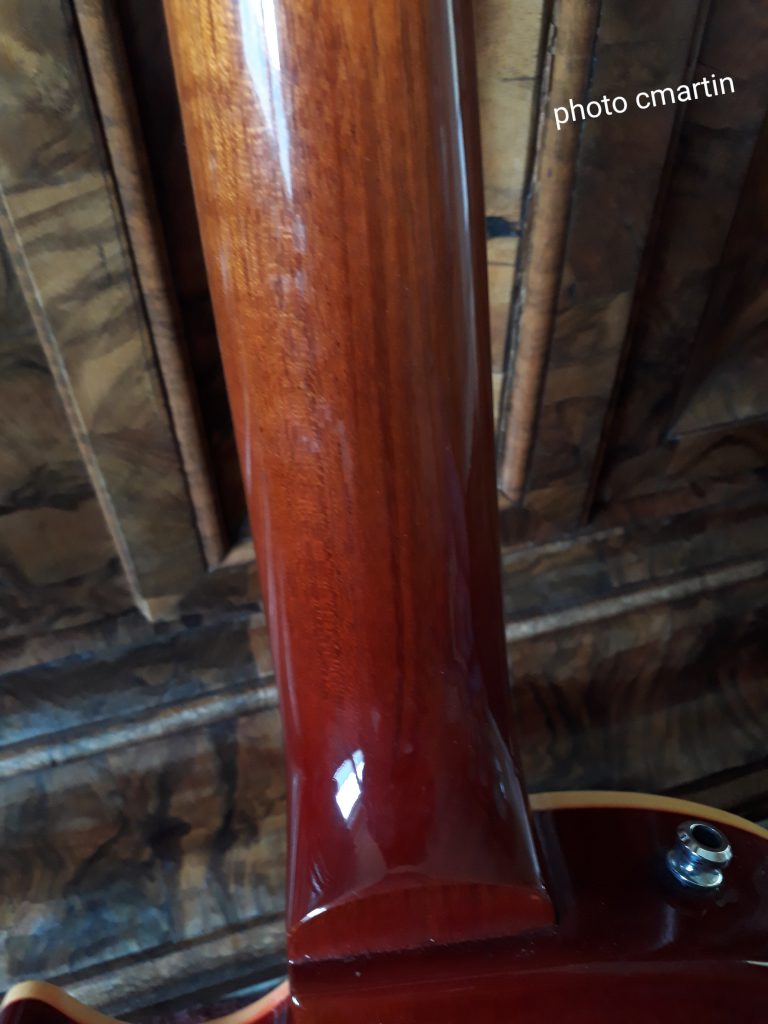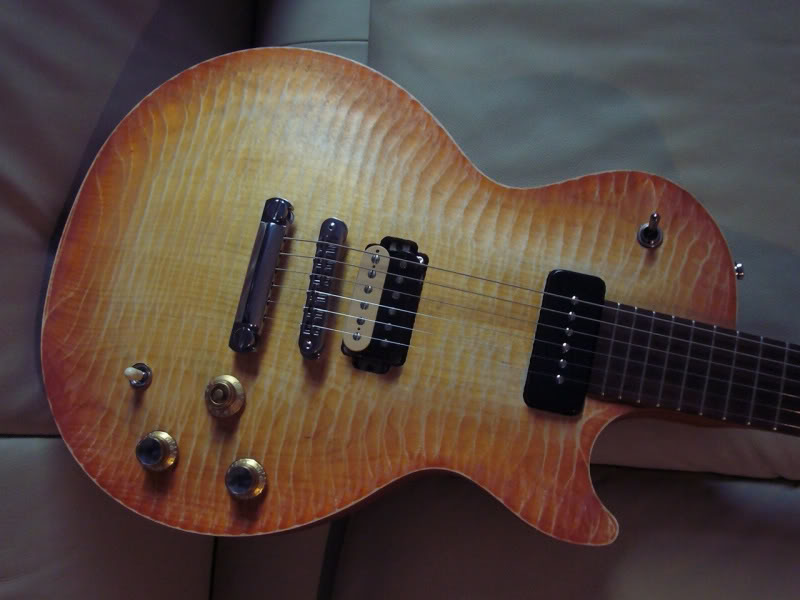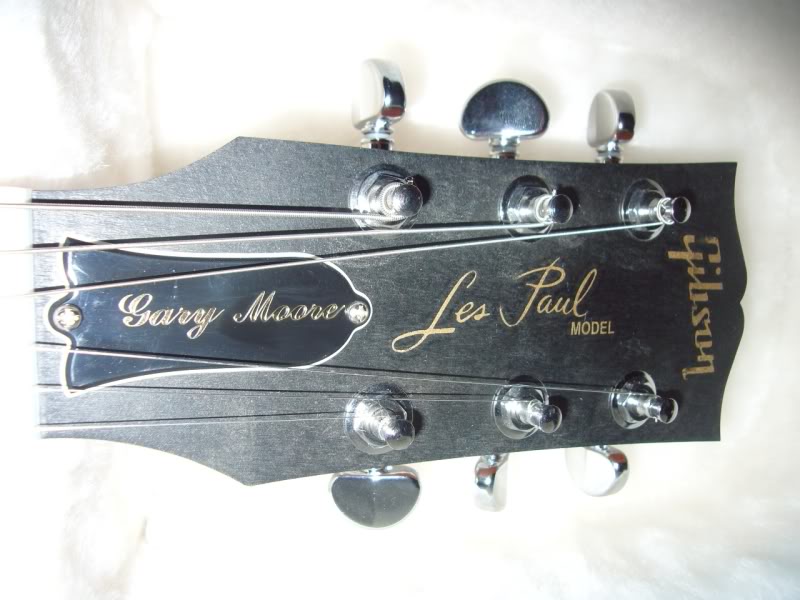2009 Gibson Les Paul R7 VOS Goldtop
Gibson Custom Shop R7 VOS
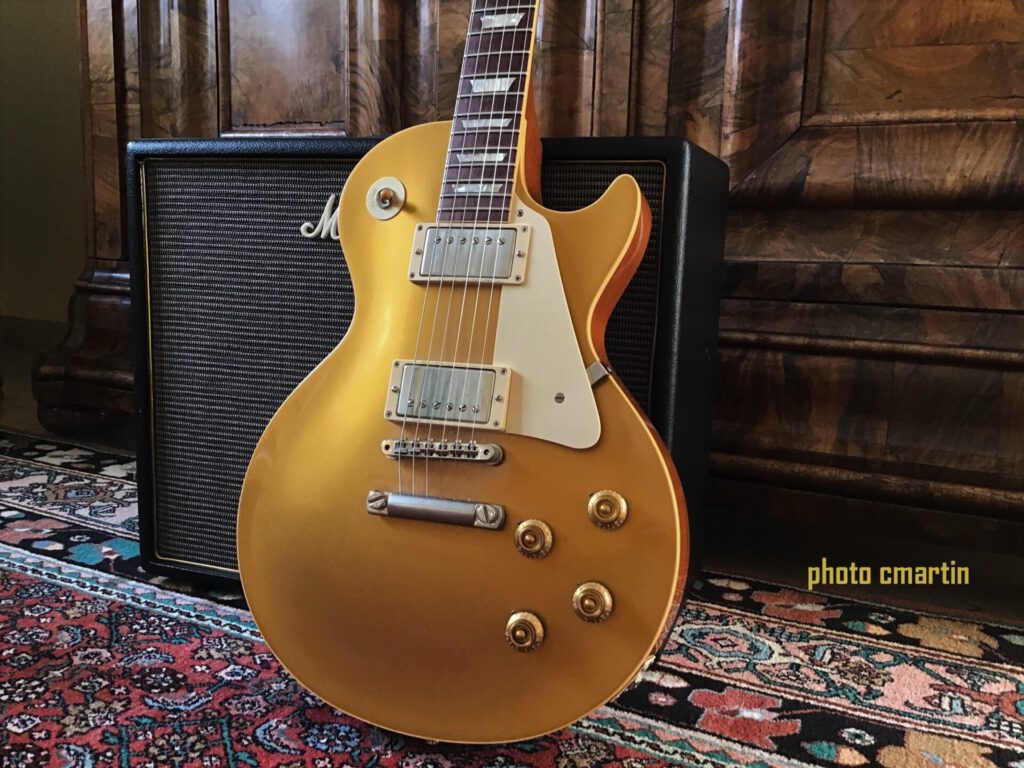
If I had to choose the best sounding Les Pauls of my selection, this axe would be on second place. Built in 2009, it got the 2009 historic specs including the `50s wiring.
Typical 1957 fat neck
Weight: 8,87 Lbs/ 4,02 kg
2009 historic specs:
- Bridge: Non-wire ABR
Nut: Correct nut material
Switch Nut: Correct number of ridges; much closer to vintage specs
Poker Chip: Thin, and much closer to vintage
Pots: Upgraded
Back Control & Switch Plates: Proper material
Back Control Plate: Correct location/orientation
TRC: Period correct Truss rod cover
Tailpiece & Knob Positions
Overall body thickness is the same, but mahogany is slightly thicker and maple is slightly thinner
Fingerboard thickness is more accurate (thinner than it was previously)
the radius on the edge of the body backside is sharper
Pickguard shape more accurate
Maple “window” in cutaway is smaller
The jackhole is now 1″ diameter (was smaller)
The overall body shape is more accurate - 50´s wiring is a cool thing and introduced in 2009 for the Custom Shop Models. What is 50´s wiring?
This wiring was used in the first Les Pauls until the end of the fifties.
What’s the difference between Gibson 50’s vs. Modern Wiring?
50’s Wiring
- when turning down the Volume more heights are remaining
- a turn of the Tone also affects the Volume
- Example: Turning guitar´s volume to eight ( as indicated by pointer washer!) tone cleans up for wonderful crunchy sounds or soloing. Fully turned on you got an enormous amount of volume for solo guitar
- Turning down the tone pot around to 4/5 you achieve affects sound and volume.
- Joe Bonamassa sound and 50´s wiring
Gary Moore performing “Evil Love” using the volume knob ( 3:50 – 4:50)
